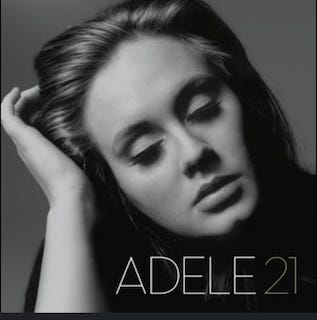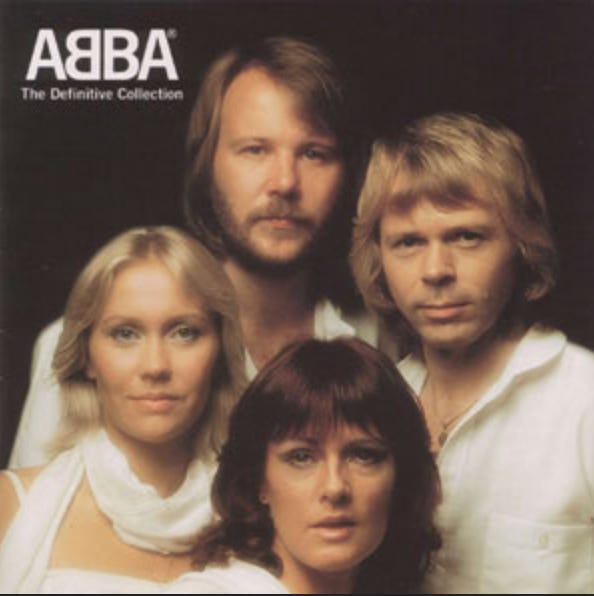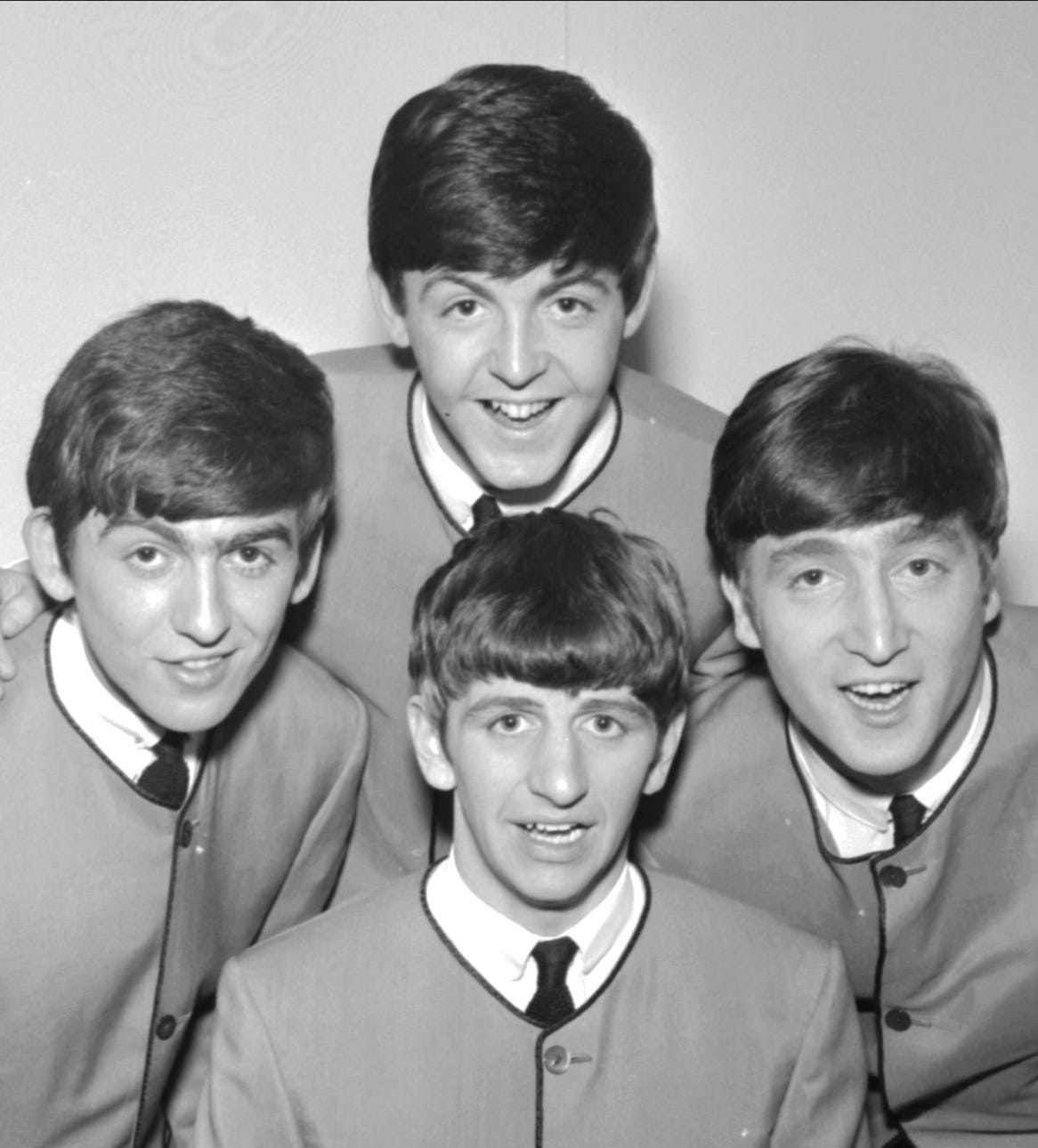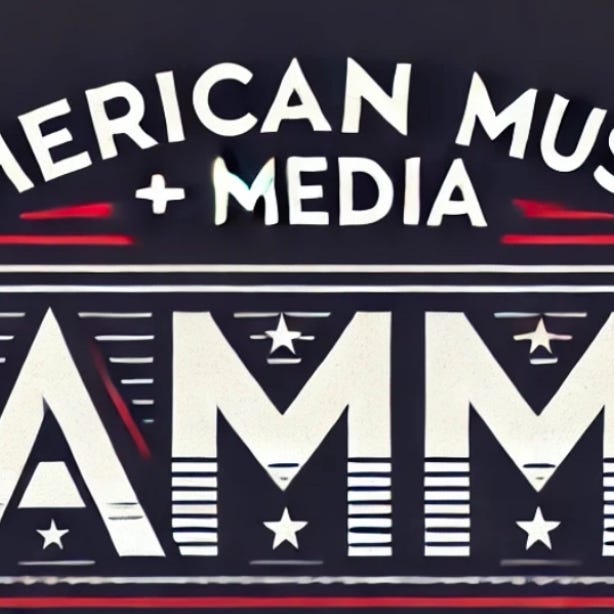March 4th: THIS DAY IN MUSIC SYNC, PUBLISHING & PARTNERSHIP HISTORY
What does music history have to do with your next collaboration? More than you think.
2011: Adele’s 21
Reaches number one on the Billboard 200, marking the beginning of a historic run that would make the album a licensing powerhouse for themes of heartache, self-discovery, and empowerment across film, television, advertising, and more. The album’s emotionally charged songs quickly became go-to choices for music supervisors, with Adele’s soulful delivery and universal lyrical themes seamlessly fitting breakup montages, self-reflective character arcs, and emotionally-driven ad campaigns.
Licensing & Visual Media Placement Highlights"Rolling in the Deep"
Film: I Am Number Four (2011) — featured in the trailer
TV: Glee (Season 3, Episode 8 — "Hold On to Sixteen") covered by the cast
Advertising: Featured in a 2013 Toyota Camry commercial in Australia
Reality TV: Performed on multiple reality singing competitions, including The Voice, American Idol, and X Factor globally.
"Someone Like You"
Film: Bridget Jones's Baby (2016) — used in a pivotal emotional moment.
TV: 90210 reboot (Season 4, Episode 1 — "Up in Smoke") featured the original recording.
Advertising: Though rarely licensed for commercials due to its somber tone, the song was frequently used in network promo campaigns during its initial release period.
Awards Shows: Performed at the 2011 MTV Video Music Awards, which boosted its cultural impact and sync appeal.
"Set Fire to the Rain"
TV: So You Think You Can Dance — Season 9 (2012) contemporary routine
Film: Featured in The Impossible (2012) international trailer
Advertising: Licensed in 2013 for a Dancing with the Stars Australia promo campaign, showcasing its versatility for dramatic and emotionally charged visuals.
"Rumour Has It"
TV: Glee (Season 3, Episode 6 — "Mash Off") performed in a mashup with "Someone Like You" — leading to a standalone sync licensing success.
Advertising: Used in US promos for ABC’s hit show Scandal in 2012.
Streaming Data (as of early 2025)
Chart Performance and Sales Data
Billboard 200: 21 spent a record 24 non-consecutive weeks at No. 1 — the longest run by a female artist in history.
Billboard Hot 100 Highlights:
"Rolling in the Deep" — #1 for 7 weeks
"Someone Like You" — #1 for 5 weeks
"Set Fire to the Rain" — #1 for 2 weeks
Album Sales: 21 has sold over 31 million copies globally, making it one of the best-selling albums of all time.
RIAA Certification: 14x Platinum (U.S. alone)
UK Certification: 17x Platinum
Why This Matters for Sync & Licensing History
Adele’s 21 didn’t just break records — it reshaped how music supervisors approached emotional storytelling through song selection. Its success signaled a resurgence of big ballads in sync placements, particularly for prestige dramas, rom-com trailers, and emotionally driven reality TV moments. The album’s success also highlights how TV performances (like Glee covers and awards show spots) can serve as licensing amplifiers, driving streams and increasing the demand for original placements.
For brands, Adele’s authenticity became a shorthand for vulnerability, resilience, and raw honesty, making her music attractive for lifestyle, automotive, and tech commercials that needed to evoke deep emotional responses in under 60 seconds.
2003: 50 Cent’s Get Rich or Die Tryin’
Debuts at No. 1 on the Billboard 200, cementing 50’s arrival as a global superstar and reshaping hip-hop’s relationship with licensing and brand partnerships. With tracks blending raw street narratives, infectious hooks, and club-ready production (largely courtesy of Dr. Dre and Eminem), the album’s music became a licensing powerhouse across sports broadcasts, film soundtracks, video games, and high-energy advertising campaigns.
Licensing & Visual Media Placement Highlights
"In Da Club"
Film: The Interview (2014) — featured prominently in a comedic scene
Film: Get Rich or Die Tryin’ (2005 biopic starring 50 Cent himself) — serves as both a narrative and sync centerpiece
TV: Entourage (Season 1, Episode 6) — played during a nightclub scene, one of the first major syncs for the track
Video Games: Def Jam: Icon (2007) — playable in-game track
Advertising: Licensed for multiple sports promos, including NFL broadcasts, NBA Finals commercials, and a Reebok campaign tied to 50 Cent’s G-Unit sneaker line.
"Many Men (Wish Death)"
Film: Southpaw (2015) — used in fight training montage
TV: Power (2014)— (produced by 50 Cent), this track became a cultural reference point throughout the series’ run.
Documentary: 30 for 30 - Broke (2012) — licensed for its gritty, reflective tone in a segment about athletes losing fortunes.
Video Games: Grand Theft Auto IV (2008) — unofficially referenced in fan mods, but heavily tied to the game’s cultural aura.
"P.I.M.P."
Film: Hustlers (2019) — part of the film’s playlist celebrating early-2000s club culture.
TV: MTV Cribs (various episodes) — played in the background during multiple celeb house tours in the mid-2000s.
Advertising: Licensed for Beats by Dre campaign targeting urban lifestyle audiences (2013).
Reality TV: Used in America’s Next Top Model for a modeling challenge soundtrack (2004).
"21 Questions"
Film: Think Like a Man (2012) — romantic montage scene.
TV: The Sopranos (Season 5, Episode 4 — “All Happy Families”) — played briefly in a nightclub scene.
Advertising: Not heavily licensed commercially due to its more intimate subject matter, but its cultural footprint made it a popular social sync for influencer content during the rise of Vine and early Instagram (2013-2015).
Streaming Data (as of early 2025)
Chart Performance and Sales Data
Billboard 200: Get Rich or Die Tryin’ debuted at #1, selling 872,000 copies in its first week — at the time, one of the biggest first-week sales for a debut album.
Billboard Hot 100 Highlights:
"In Da Club" — #1 for 9 weeks
"21 Questions" — #1 for 4 weeks
"P.I.M.P." — Peaked at #3
Album Sales: Over 12 million copies sold worldwide.
RIAA Certification: 9x Platinum (U.S.)
UK Certification: 3x Platinum
Why This Matters for Sync & Licensing History
Get Rich or Die Tryin’ was a watershed moment for hip-hop licensing. While rap music had often struggled with brand adoption due to concerns over lyrical content, 50 Cent — through his G-Unit clothing line, Reebok deal, and film crossovers — helped bridge the gap between street credibility and mainstream marketability. His music became a sonic calling card for sports montages, action trailers, and urban lifestyle branding.
Notably, "In Da Club" is now one of the most-licensed hip-hop songs of all time, demonstrating that cultural ubiquity can drive long-tail sync revenue.
1986: MTV Airs The Monkees Marathon
In 1986, MTV aired a weekend-long marathon of The Monkees, the groundbreaking 1960s television show starring the pre-fab four — Davy Jones, Micky Dolenz, Michael Nesmith, and Peter Tork. Originally a musical sitcom from 1966 to 1968, the show introduced millions to The Monkees’ music, including hits like “Daydream Believer,” “I’m a Believer,” and “Last Train to Clarksville.”
What MTV didn’t predict was the cultural explosion that followed. The marathon sparked a full-scale Monkees revival, sending their old albums back onto the charts, driving new licensing requests, and proving that television could breathe new life into dormant catalogs. By the end of 1986, The Monkees had not only reunited for a successful tour, but their songs were newly in demand for sync placements across film, TV, and advertising.
Licensing & Visual Media Placement Highlights
"Daydream Believer"
Film: The Brady Bunch Movie (1995) — used in a satirical montage that played on 60s nostalgia.
Film: Shrek Forever After (2010) — covered by Weezer, showcasing the Monkees’ continued influence.
TV: Breaking Bad (Season 5, Episode 12 — "Rabid Dog") — featured in an unsettling juxtaposition scene (2013).
Advertising: Licensed for eBay campaign (2000s) promoting the joy of discovering vintage items.
"I’m a Believer"
Film: Shrek (2001) — famously covered by Smash Mouth, creating a sync within a sync moment that boosted both The Monkees’ publishing revenue and Smash Mouth’s recording career.
Film: The Wedding Singer (1998) — played during a romantic moment, reinforcing its status as a feel-good classic.
TV: Glee (2012) — covered in Season 3’s “Yes/No” episode.
Advertising: Target Holiday Campaign (2007), leveraging the song’s upbeat, family-friendly vibe.
"Last Train to Clarksville"
Film: Forrest Gump (1994) — used briefly in a Vietnam War-era montage, connecting the song to the draft and anti-war movement.
TV: The Wonder Years (1989) — featured in a 1960s flashback episode.
Advertising: Licensed for Kohl’s Back-to-School campaign (2016), connecting the train imagery to students “boarding” for a new year.
"Pleasant Valley Sunday"
Film: Vanilla Sky (2001) — part of the era-defining, nostalgia-drenched soundtrack.
TV: Mad Men (2015, Season 7) — placed in a scene evoking suburban discontent.
Documentary: Echo in the Canyon (2018) — featured in a segment discussing the intersection of pop music and the counterculture movement.
Streaming Data (as of early 2025)
Chart Performance and Sales Data (Revival Era)
Billboard 200: In 1986, the reissue of The Monkees’ Greatest Hits climbed back into the Top 100, peaking at #89, proving the impact of the MTV marathon.
Billboard Hot 100 Highlights (Original Era):
"Last Train to Clarksville" — #1 (1966)
"I’m a Believer" — #1 for 7 weeks (1966-1967)
"Daydream Believer" — #1 (1967)
RIAA Certification: Multiple platinum and gold albums, including 4x Platinum for The Monkees’ Greatest Hits.
UK Impact: The Monkees’ Greatest Hits re-entered the UK Albums Chart in 1986, peaking at #11.
Why This Matters for Sync & Licensing History
The 1986 Monkees Marathon became one of the earliest and most successful case studies in catalog revival driven by television re-airings. Before streaming, syndication and re-broadcasts were the primary ways for older catalogs to reach new audiences, and MTV’s millennial audience embraced The Monkees with nostalgic curiosity and ironic affection.
This meant that The Monkees’ songs could now serve dual roles:
Authentic 60s period pieces for historical scenes.
Playfully ironic or nostalgic cues in comedies and pop-culture commentary.
Lesson for Today’s Sync World:
The Monkees Effect demonstrates the power of media to resurface catalogs, a phenomenon we now see through streaming-era viral resurgences (think: Kate Bush’s "Running Up That Hill" via Stranger Things). Understanding these revival triggers helps both rights holders and supervisors capitalize on licensing windows when cultural waves hit.
1974: ABBA Wins Eurovision
ABBA performed “Waterloo” at the Eurovision Song Contest in Brighton, England — and walked away as Sweden’s first-ever Eurovision winners. This victory was more than a milestone for the band; it catapulted ABBA onto the global stage, kicking off a career that would become synonymous with cross-platform licensing success.
With a catalog filled with infectious melodies and instantly recognizable choruses, ABBA’s songs became licensing gold for film, television, commercials, video games, and even stage musicals. In fact, ABBA might hold the record for the longest-running licensing streak of any non-English native band, spanning from the 1970s to today.
Licensing & Visual Media Placement Highlights
“Waterloo” (The Eurovision Breakthrough Hit)
Film: Muriel’s Wedding (1994) — ABBA’s music formed the emotional backbone of this indie classic.
Film: Mamma Mia! (2008 & 2018) — central to both film’s storylines and soundtrack, reviving ABBA’s presence for a new generation.
TV: The Office (US) — featured in the “Murder” episode (Season 6, 2009), adding comedic contrast to a tense workplace mystery.
Advertising: Volkswagen (2014) campaign, emphasizing fun and freedom on the road.
“Dancing Queen”
Film: Priscilla, Queen of the Desert (1994) — a defining moment in LGBTQ+ film history.
Film: Mamma Mia! (2008 & 2018) — a centerpiece performance in the musical adaptation.
TV: The Simpsons — used in several episodes, most notably “The Way We Weren’t” (2004).
Advertising: Apple (2022) — used to launch the iPhone 14, blending nostalgia with innovation.
“Take a Chance on Me”
Film: The Adventures of Priscilla, Queen of the Desert (1994) — another ABBA highlight in this cult classic.
Film: Mamma Mia! (2008 & 2018) — performed with comedic flair by Christine Baranski.
TV: ER (1999) — used in a memorable episode set at a retro karaoke night.
Advertising: Aetna Insurance (2017), playing off the “taking a chance” lyric to encourage people to explore healthcare options.
“Gimme! Gimme! Gimme! (A Man After Midnight)”
Film: Mamma Mia! (2008) — performed as a girls’ night anthem.
TV: Stranger Things (2022) — featured in Season 4, contributing to the show’s retro-obsessed soundscape.
Video Game: Just Dance 2020 — featured as a playable song.
Advertising: Old Navy (2018) — used to promote a retro-inspired fashion line.
“Mamma Mia”
Film: Mamma Mia! (2008) — the film’s namesake, setting the tone for the entire movie and Broadway adaptation.
TV: Gilmore Girls (2002) — featured in the Season 3 episode “That’ll Do, Pig.”
Advertising: Visa (2016) — part of a global travel campaign promoting spontaneous vacations.
Streaming Data (as of early 2025)
Chart Performance and Sales Data
Billboard Hot 100:
"Waterloo" — Peaked at #6 in the US (1974).
"Dancing Queen" — #1 in the US (1977), ABBA’s only US chart-topper.
"Take a Chance on Me" — Peaked at #3 (1978).
UK Singles Chart:
"Waterloo" — #1 (1974).
"Dancing Queen" — #1 (1976).
"Gimme! Gimme! Gimme!" — Peaked at #3 (1979).
RIAA Certification:
Gold & Platinum: Multiple ABBA albums and compilations certified Gold, Platinum, and Multi-Platinum.
Gold: Greatest Hits (1992) — 6x Platinum in the US alone.
Global Sales: ABBA has sold over 385 million records worldwide, putting them in the Top 10 best-selling artists of all time.
Why This Matters for Sync & Licensing History
ABBA’s Eurovision win didn’t just launch a global pop career — it positioned them as prime licensing material thanks to their blend of universal themes, sing-along choruses, and emotional storytelling. Over the decades, ABBA’s catalog has been strategically placed in hundreds of projects, constantly reinforcing their relevance across film, TV, advertising, and even video games.
Their story highlights how cultural moments (like winning Eurovision) can become long-tail licensing assets when handled correctly. ABBA’s ability to reinvent themselves via stage musicals (“Mamma Mia!”), tribute films, and nostalgic TV moments has created a blueprint for licensing longevity — something today’s artists (and their publishing teams) can study closely.
1966: John Lennon’s “Bigger Than Jesus” Interview Airs
John Lennon gave an interview to journalist Maureen Cleave for the London Evening Standard where he remarked that The Beatles were “more popular than Jesus.” At the time, Lennon intended it as a commentary on declining church attendance in the UK, but once the quote crossed the Atlantic into the American press, it ignited a firestorm of controversy.
Radio stations across the American South banned Beatles records, protests erupted with public burnings of Beatles albums, and the band’s U.S. tour that year became fraught with security concerns. But in the long run, the controversy only deepened global fascination with The Beatles, cementing their place in pop culture mythology—a mythology that would supercharge their licensing appeal for decades to come.
Licensing & Visual Media Placement Highlights
“All You Need Is Love”
Film: Love Actually (2003) — performed in the film’s iconic wedding scene.
Film: The Simpsons Movie (2007) — Homer’s environmental epiphany sequence.
TV: Friends — closing scene of “The One with the Proposal” (2000).
Advertising: Chanel No. 5 (2018) — emotional campaign tying scent to universal love.
“Revolution”
Advertising: Nike (1987) — one of the most controversial ad placements in music licensing history, as Apple Records sued Nike over unauthorized use. Despite the lawsuit, the campaign proved that Beatles music could drive youth culture branding.
Film: Minions: The Rise of Gru (2022) — part of the 1970s-set soundtrack.
TV: Mad Men — used in the final season to underscore shifting cultural tides.
“Here Comes the Sun”
Film: Bee Movie (2007) — introducing a new generation to Beatles music.
TV: The Office (US) — Season 5’s “Cafe Disco” scene.
Advertising: SunChips (2014) — feel-good sustainability campaign.
“Come Together”
Film: A Bronx Tale (1993) — used in the soundtrack to capture the era’s tension and style.
Film: Justice League (2017) — covered by Gary Clark Jr. for the movie’s trailer and end credits.
TV: The Blacklist — used in a Season 1 promo campaign.
Advertising: Microsoft (2012) — campaign for the Surface tablet launch.
“Let It Be”
Film: Across the Universe (2007) — centerpiece ballad of the Beatles-inspired jukebox musical.
TV: Glee (2013) — performed in the Beatles tribute episode.
Advertising: Apple (UK) (2015) — emotive Christmas campaign.
Streaming Data (as of early 2025)
(Combined Beatles & Solo Lennon Versions Where Applicable)
Chart Performance and Sales Data
Billboard Hot 100:
“All You Need Is Love” — #1 (1967).
“Revolution” — Peaked at #12 (1968, B-side to “Hey Jude”).
“Here Comes the Sun” — Though never a single, it remains the most-streamed Beatles song.
“Come Together” — #1 (1969, double A-side with “Something”).
“Let It Be” — #1 (1970).
RIAA Certification:
Multiple Beatles albums certified Gold, Platinum, and Multi-Platinum.
1 (2000 compilation) — Diamond (12x Platinum).
Abbey Road — 12x Platinum.
Let It Be — 4x Platinum.
Global Sales: The Beatles have sold over 600 million albums worldwide, securing their place as the best-selling music act of all time.
Why This Matters for Sync & Licensing History
The “Bigger Than Jesus” moment exemplifies how controversy can fuel demand. The backlash initially jeopardized The Beatles’ American dominance, but ultimately expanded their mystique. When artists become cultural flashpoints, their songs gain emotional currency, making them irresistible to filmmakers, showrunners, ad agencies, and brands eager to tap into that cultural resonance.
Decades later, The Beatles’ catalog—both as a band and through solo projects like Lennon’s work—became one of the most valuable and sought-after for licensing.
Why does this moment in history matter to YOU?
At American Music + Media, we don’t just cover music news and history — we break down the deals, the innovations, and the cultural shifts that shaped the business of sync, publishing, licensing, and the partnerships that have been created. If you work in Film, Television/OTT, Advertising, Gaming, Sports, Theater, Brands, Streaming, or Tech, this isn’t just trivia — it’s insight into the very foundation of how music moves through media.
Your next opportunity might just start with understanding how the last one happened.
Disclaimer: The information provided in this post is based on publicly available sources and internet research. While we strive for accuracy, some streaming numbers, chart positions, and licensing placements may vary or be incomplete. This content is intended to give a general overview of each project’s historical impact and licensing footprint to date.













